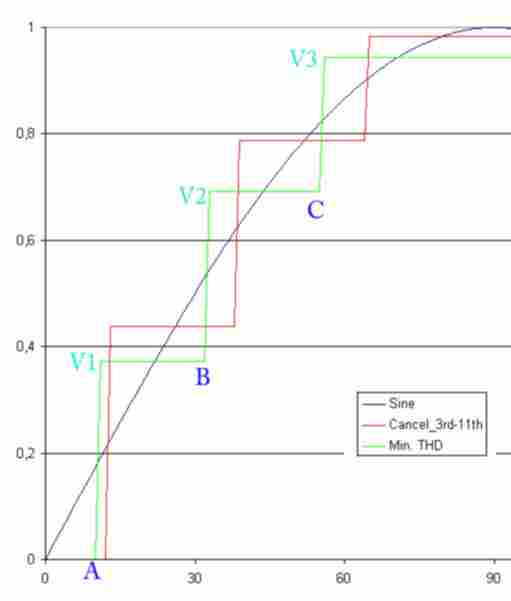ALERTLINKS
Advanced Member level 4

I want to build a 220v 50Hz inverter with three or voltage four steps for 1/4 of sine wave. I need to calculate the best combination of voltages and the interval between them for optimum performance and low distortion. there will be three or four dc voltage sources(as required) including one for maximum around 300 volts.At first it will be stepped from low, medium to high then to medium to low and then to 0v for half cycle of sine wave.

I need values for time, T1, T2, T3,T4 and voltages V1, V2 and V3 for best performance.

I need values for time, T1, T2, T3,T4 and voltages V1, V2 and V3 for best performance.
Last edited:



